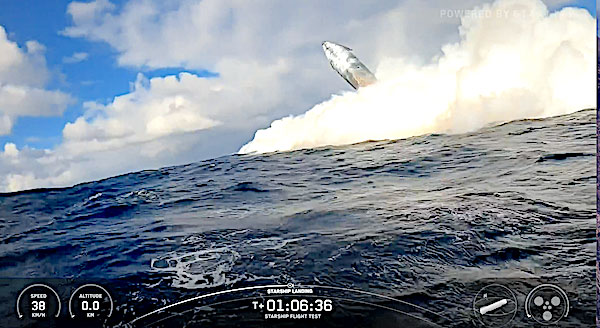Accordingly, the Starship missile successfully launched the first batch of fake Starlink satellites into space and tested new heat shields as it passed through the Earth's atmosphere.
The Starship missile, with a altitude of 123m, took off at around 7:30 p.m. (local time) from SpaceX's Starbase facility in the south of Texax (USA) and entered space just 3 minutes later.
After floating in space for about 30 minutes, the Starship began launching 8 more fake Starlink satellites. This success is not only very meaningful but also marks a new step forward in SpaceX's technology.
NASA has previously chosen the Starship to bring the first humans to the moon since the Apollo program, and billionaire Elon Musk has also considered the missile a core element to carry out its regular goal of sending humans to Mars because it is designed for reuse.
The Starship's return to the Earth's atmosphere at an ultrasound speed and extremely high temperatures over the Indian Ocean about 1 hour after starting the mission has shown the effectiveness of the heat shields that SpaceX provided for the missile.

The mission ended with a steady landing in a steady vertical direction. However, the Starship then moved on an engine over the ocean surface in western Australia and suddenly overturned and exploded - a predictable outcome because the missile may have been self-activated by the flight cancellation system.
Observers said the explosion in the middle of the ocean looked like a "fire bulb".
However, this test flight has shown expected progress in SpaceX's "test to fail" campaign after three previous failures occurred much earlier in the flight and on a test runway in Texas.
NASA's Acting Director Sean Duffy congratulated SpaceX on X and said: "The success of Flight 10 has paved the way for the Starship Human Landing System to bring American astronauts back to the Moon on the Artemis 3 mission."









